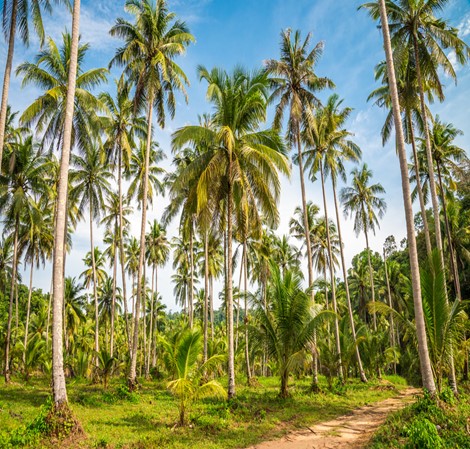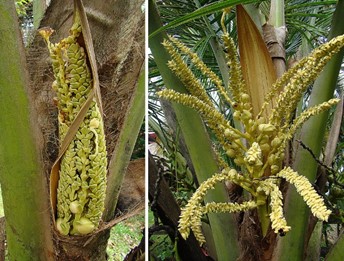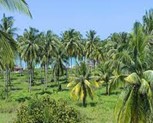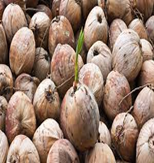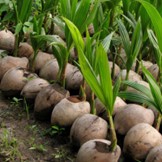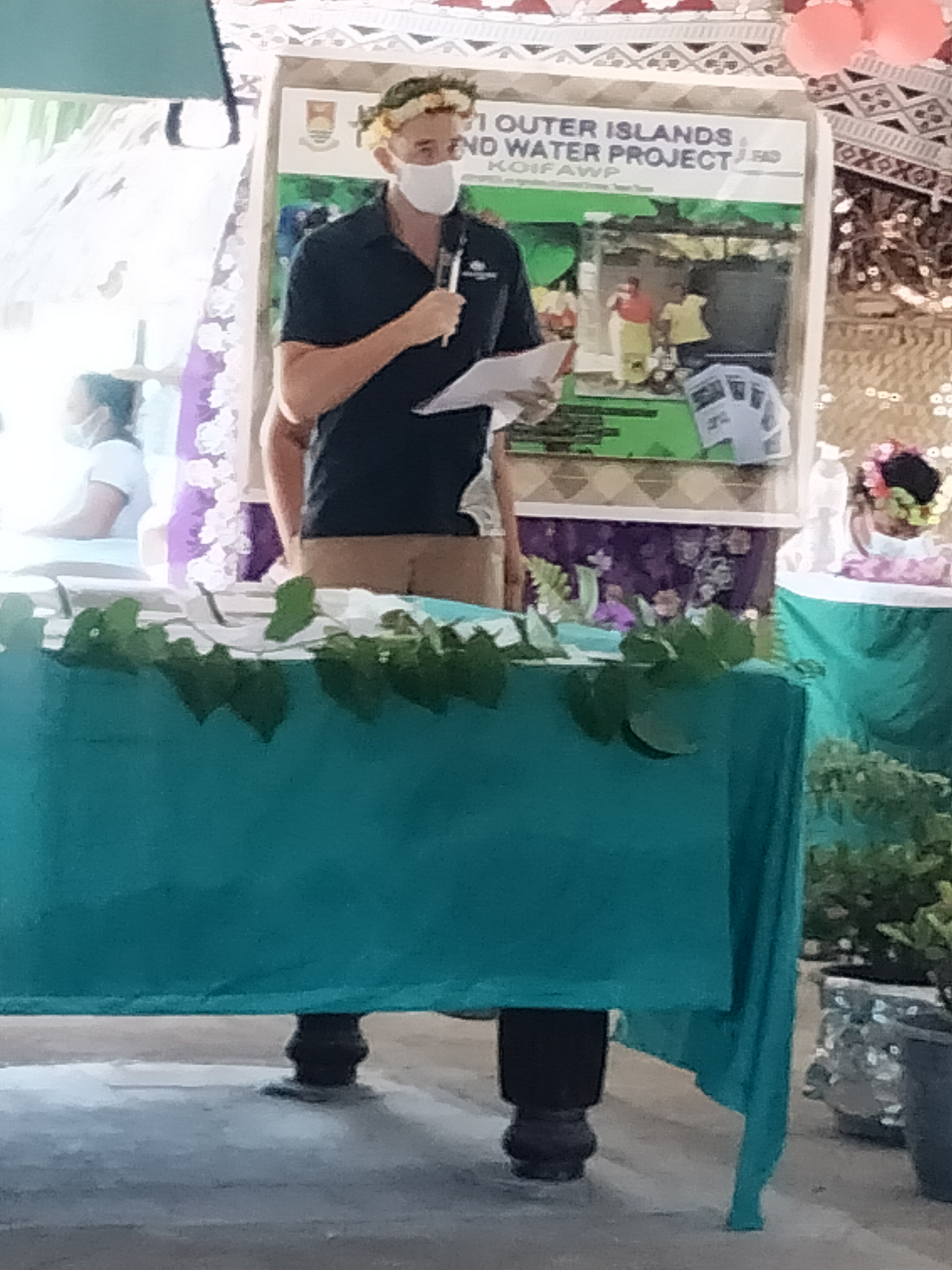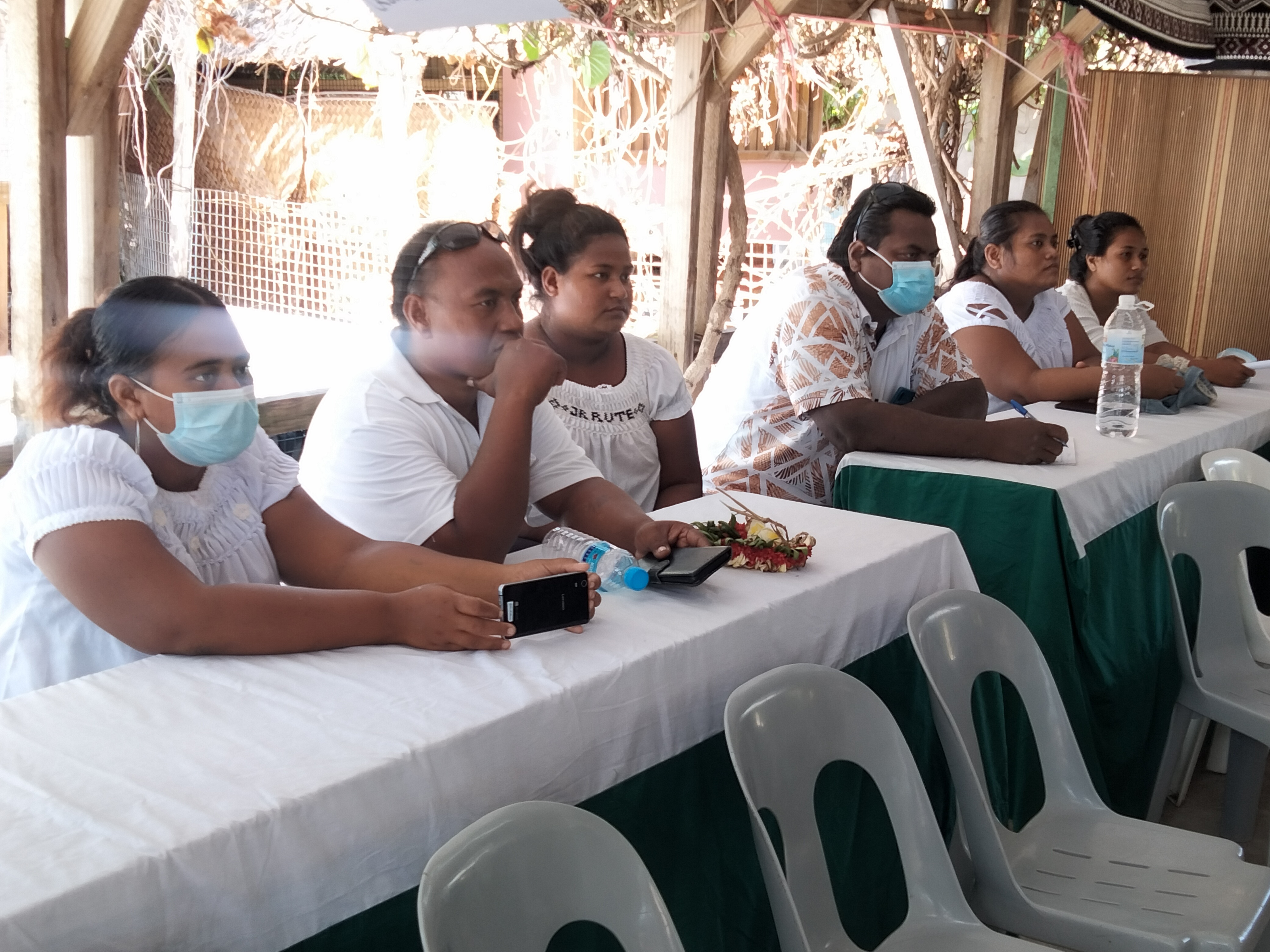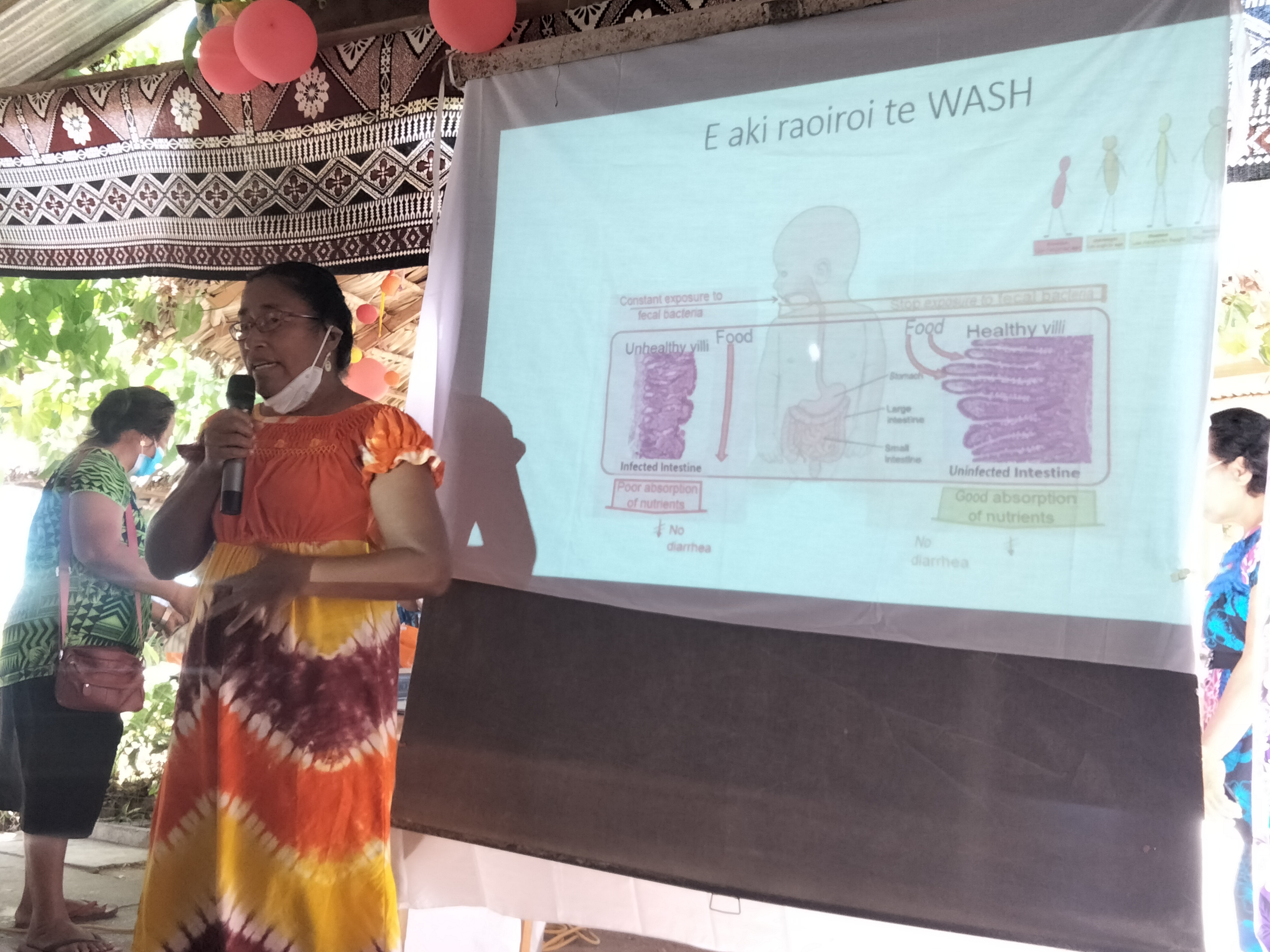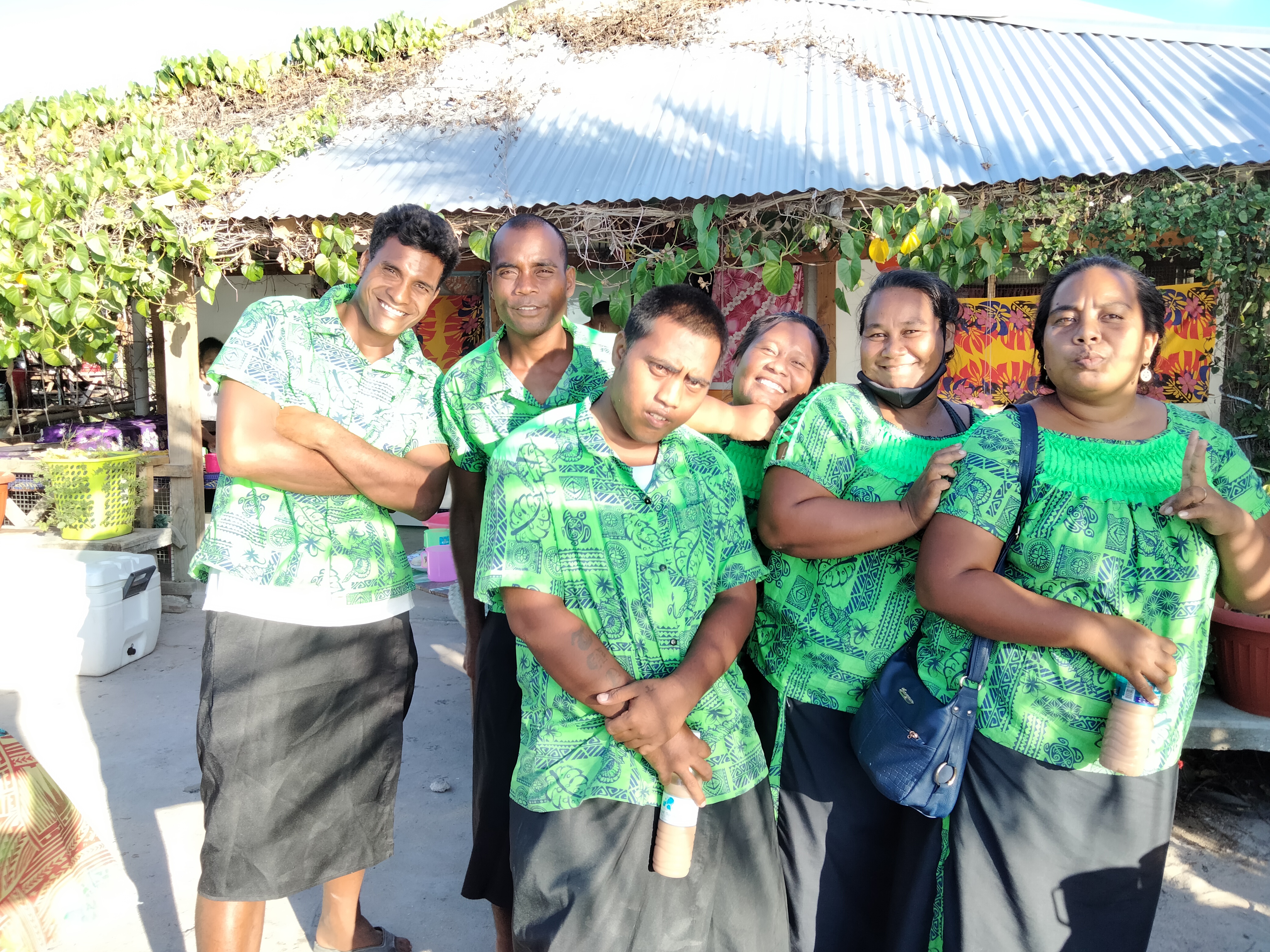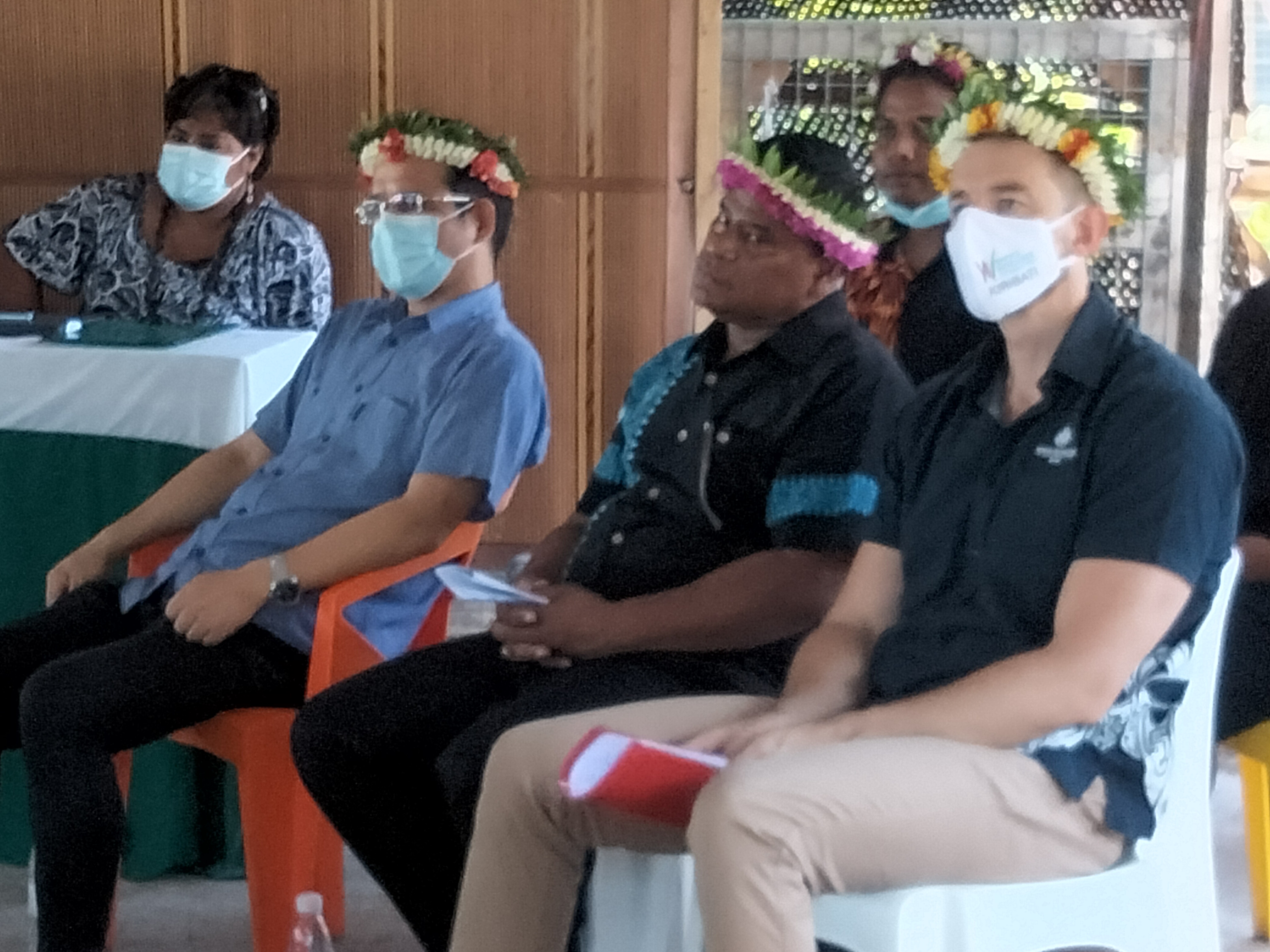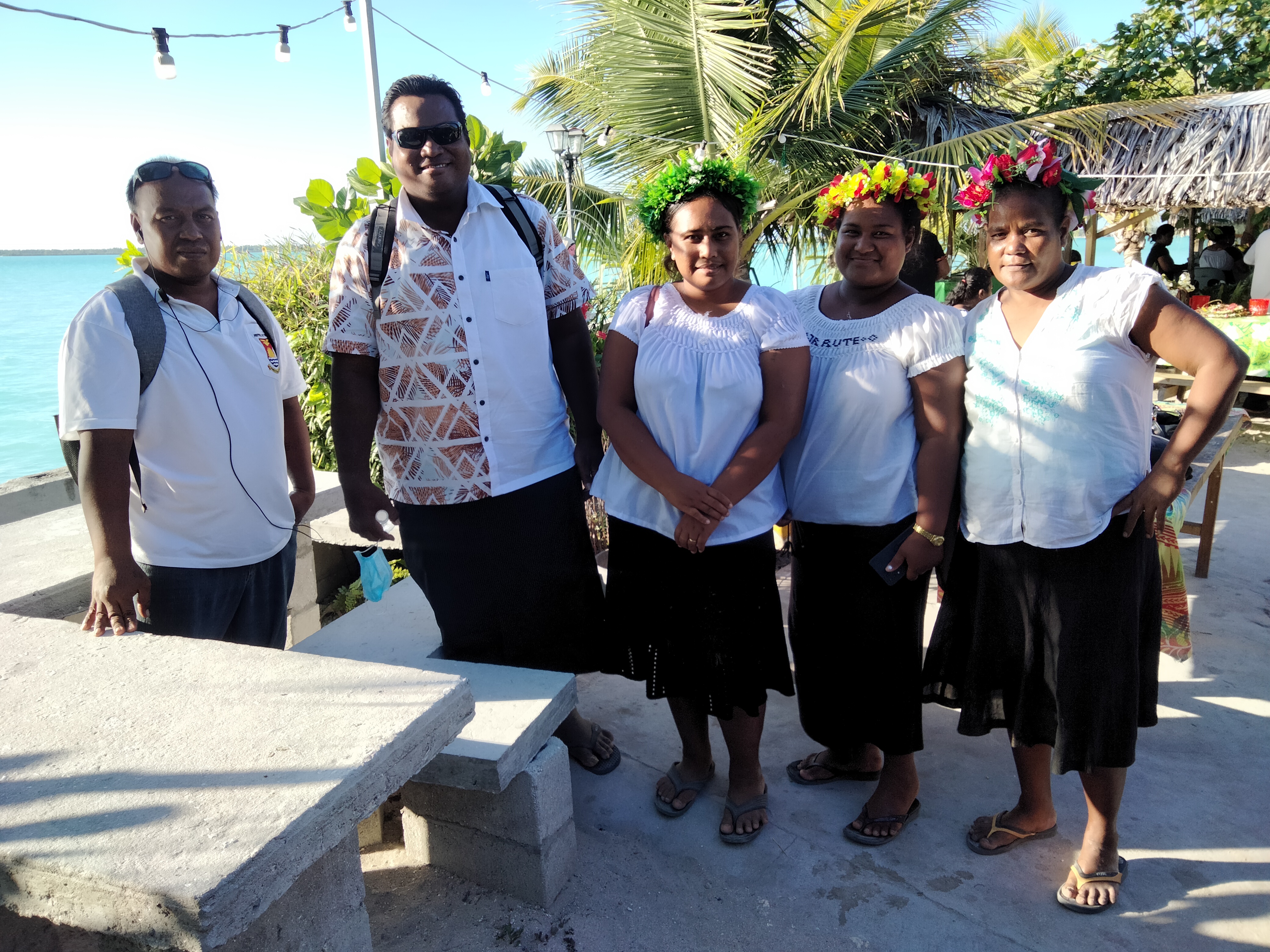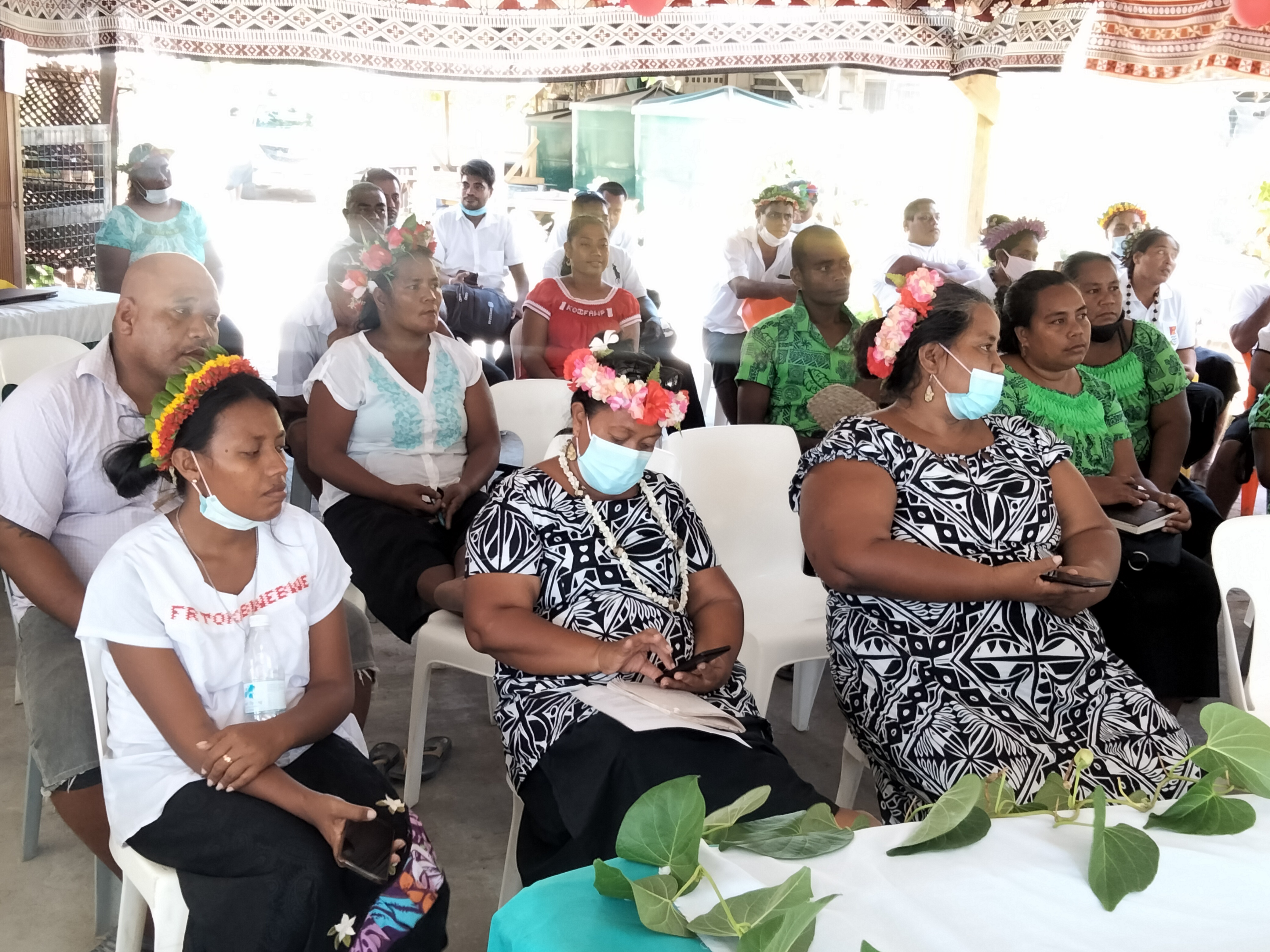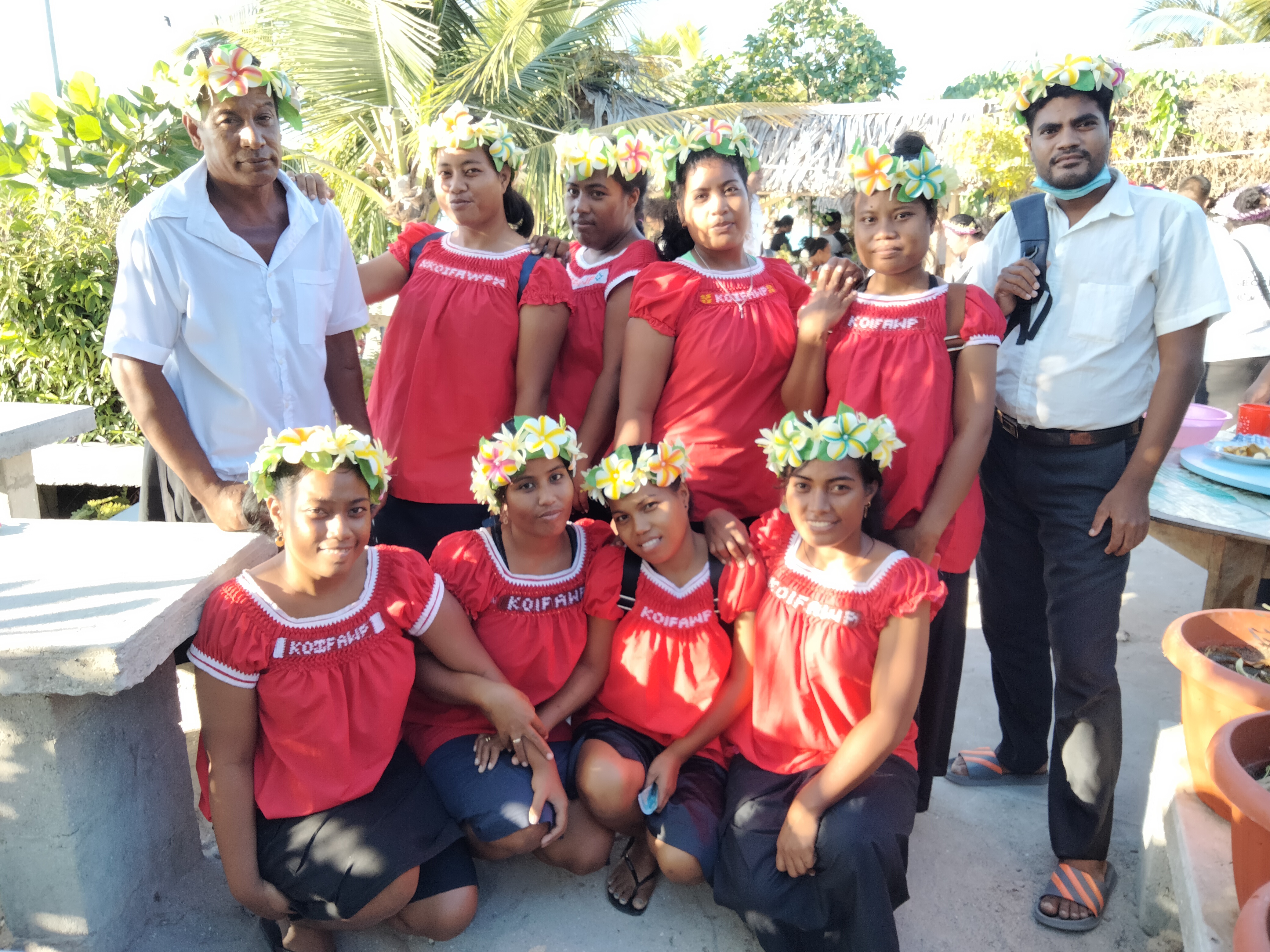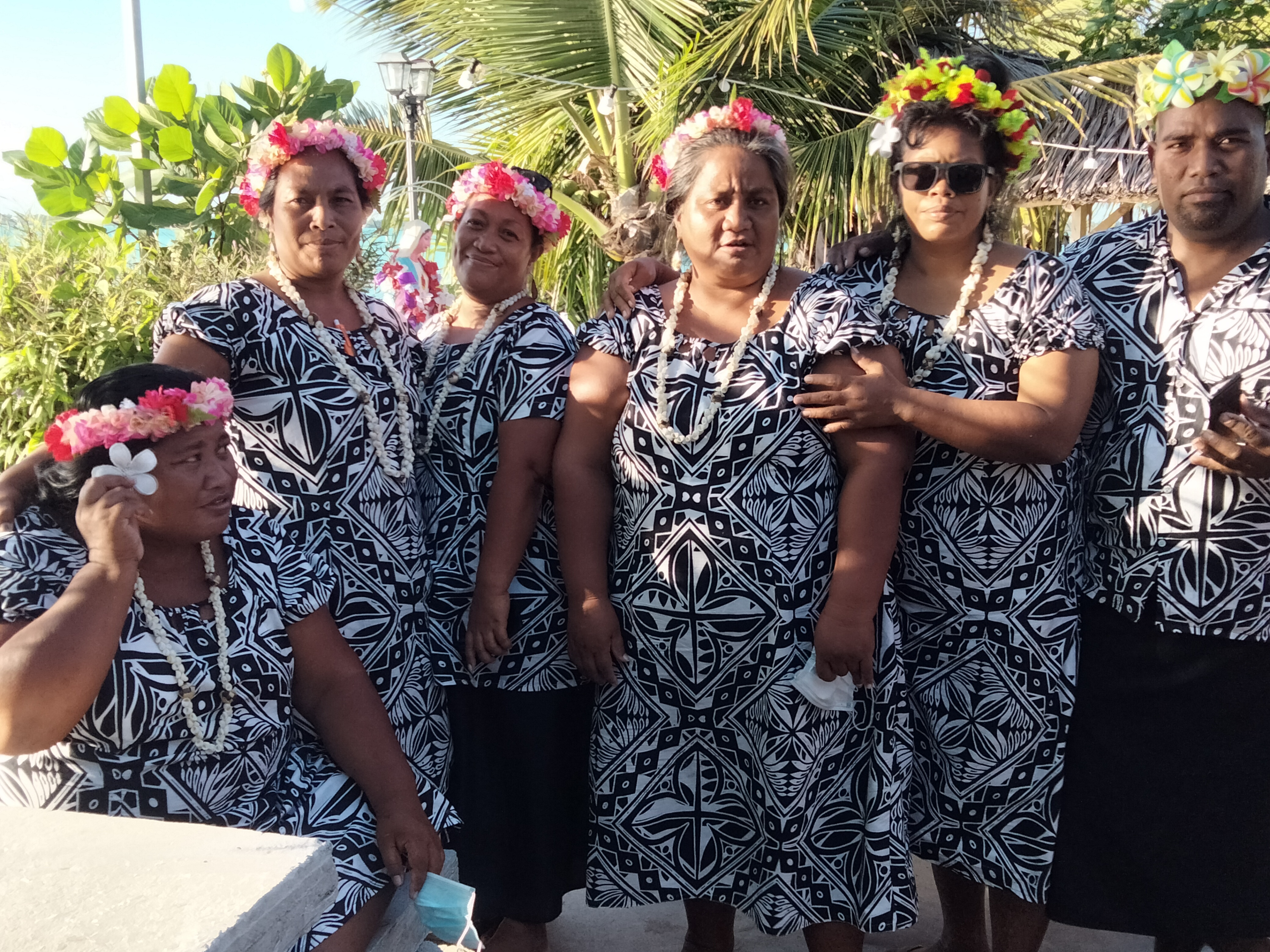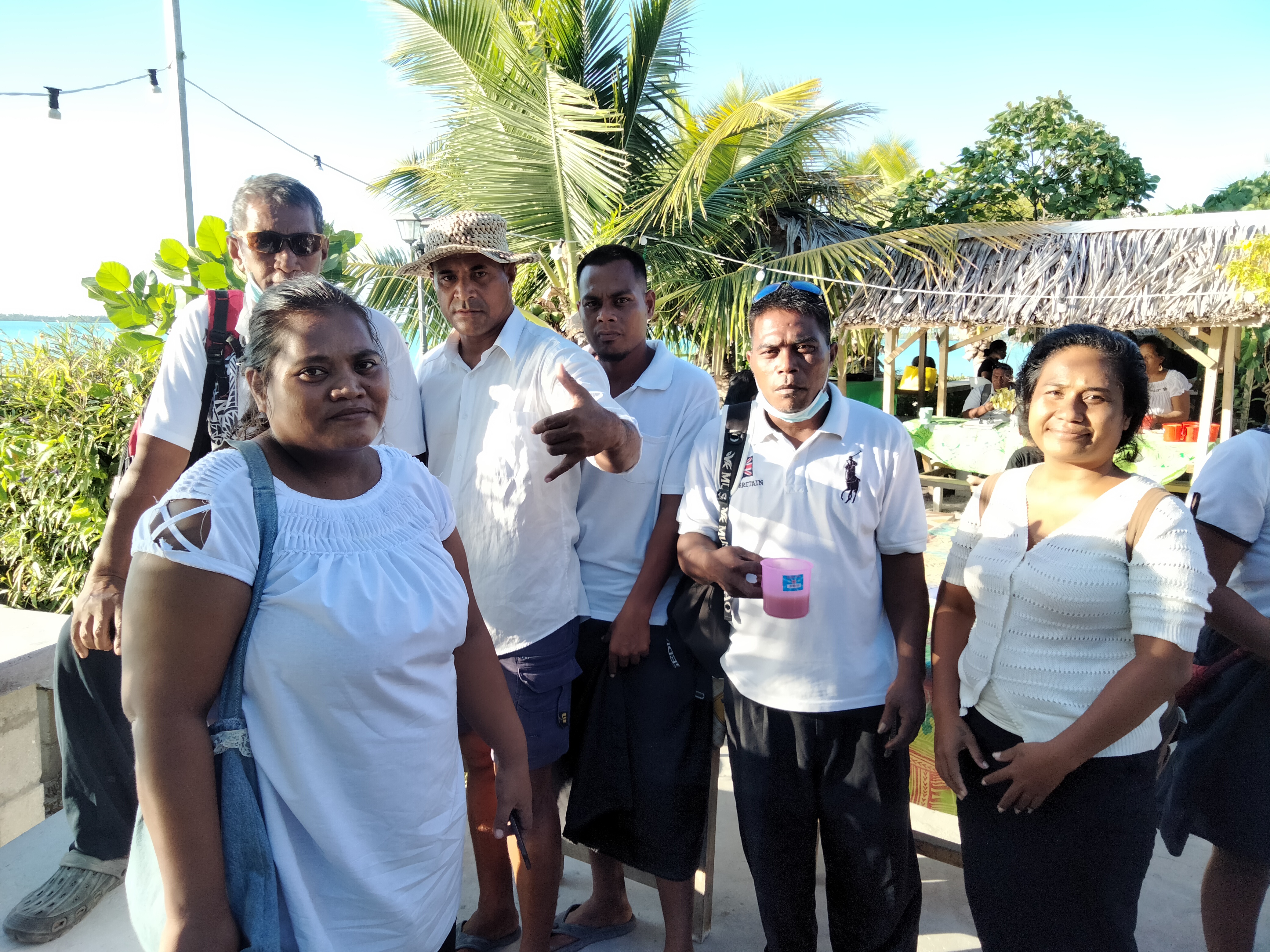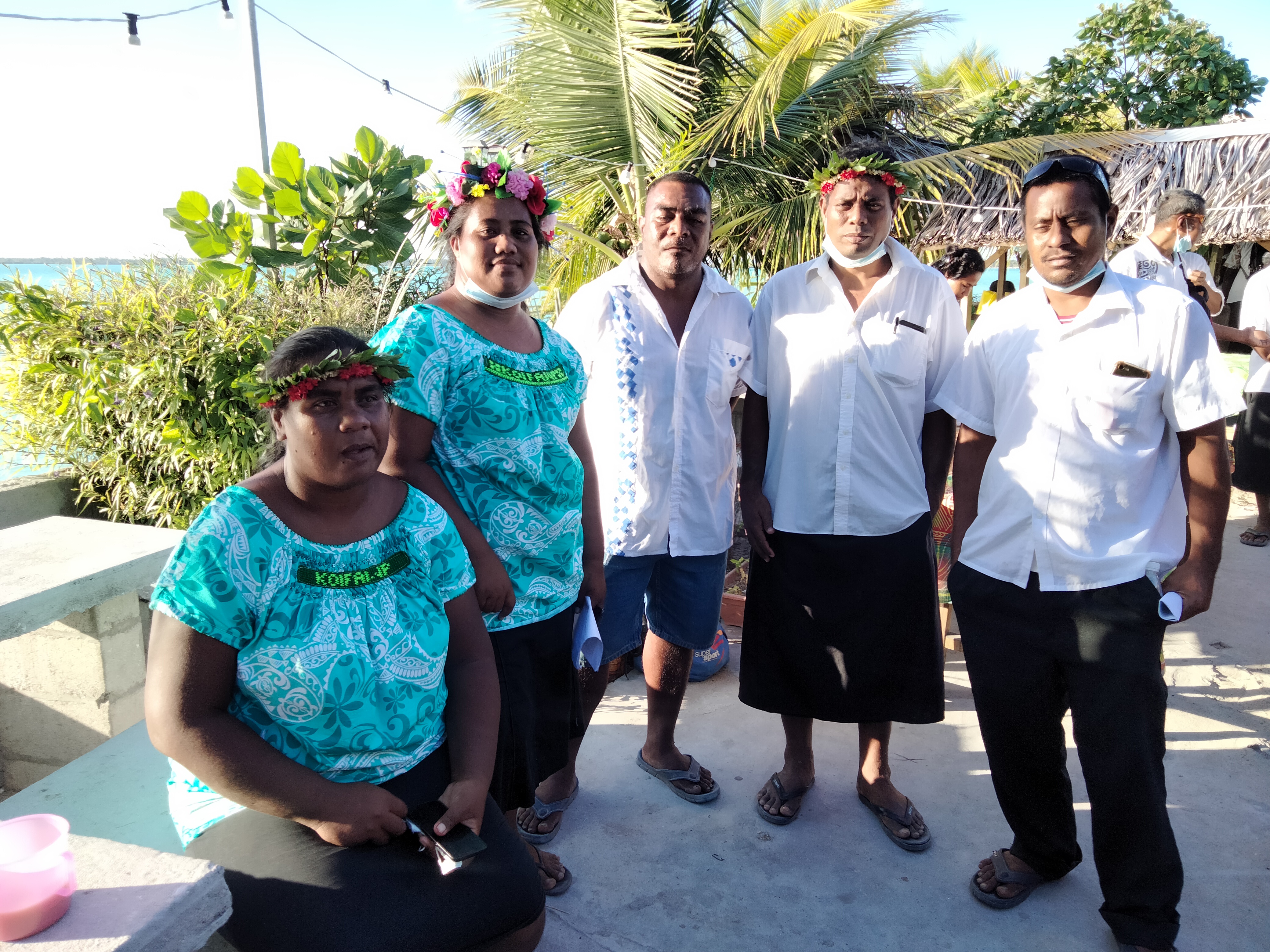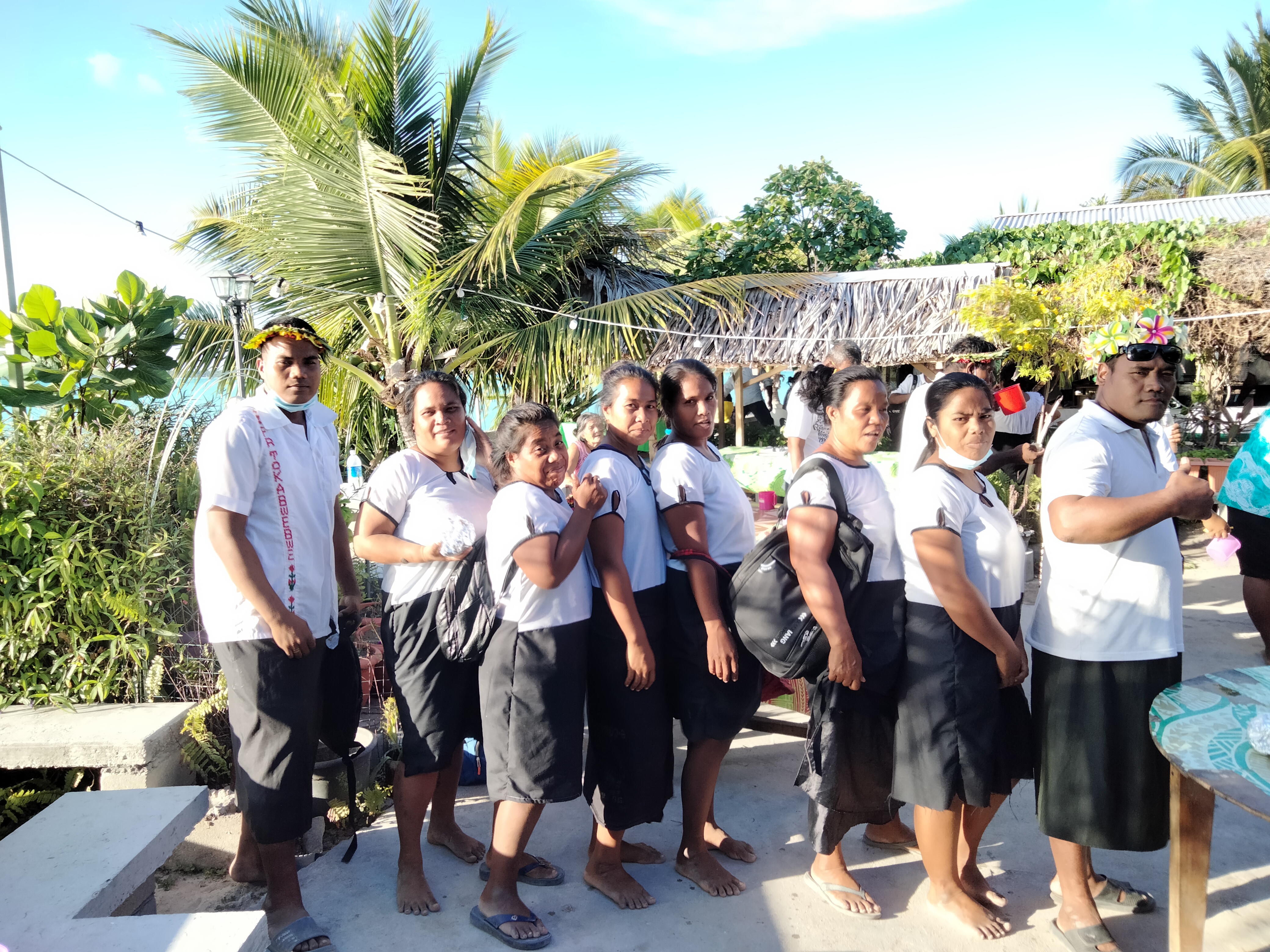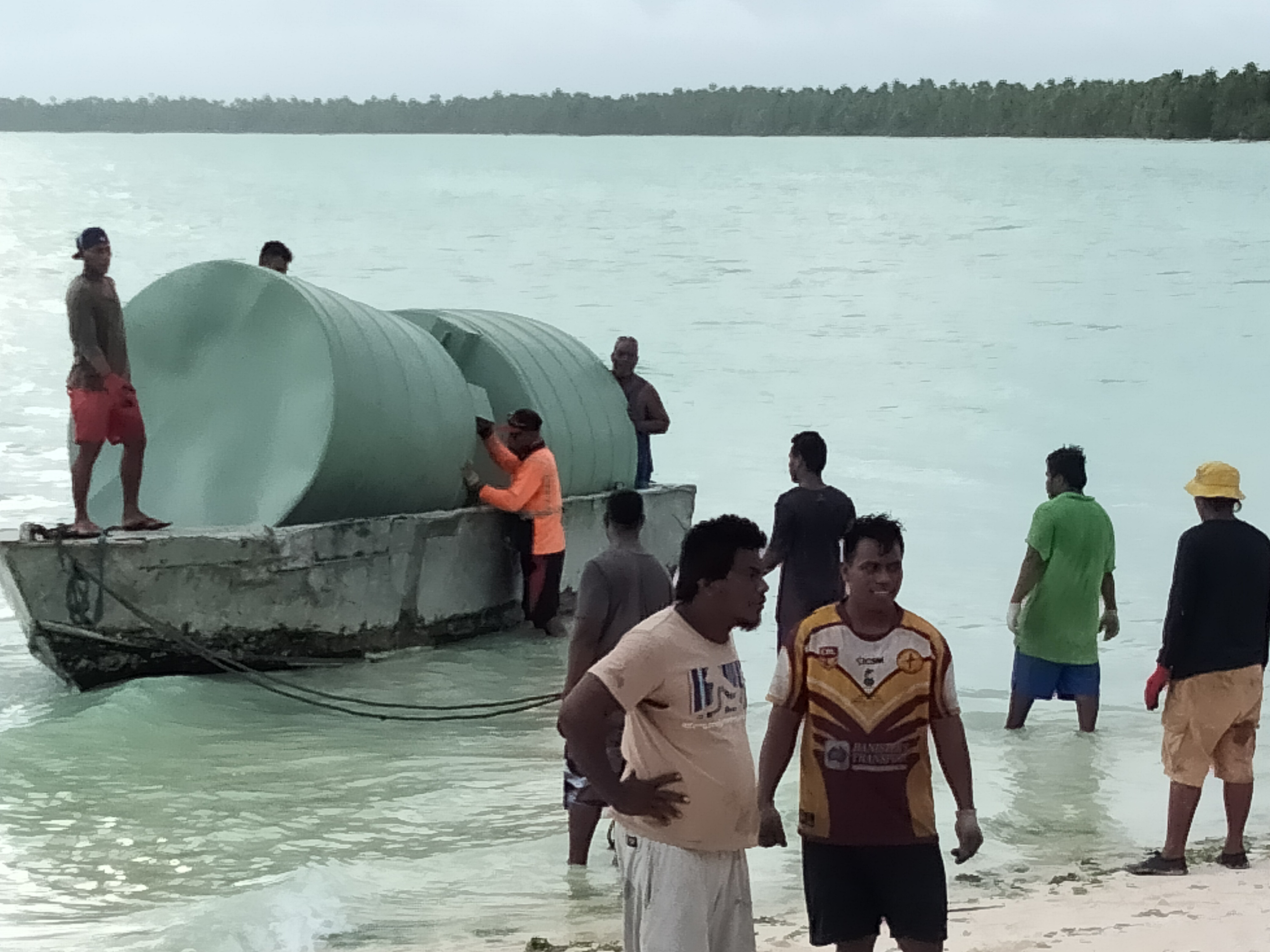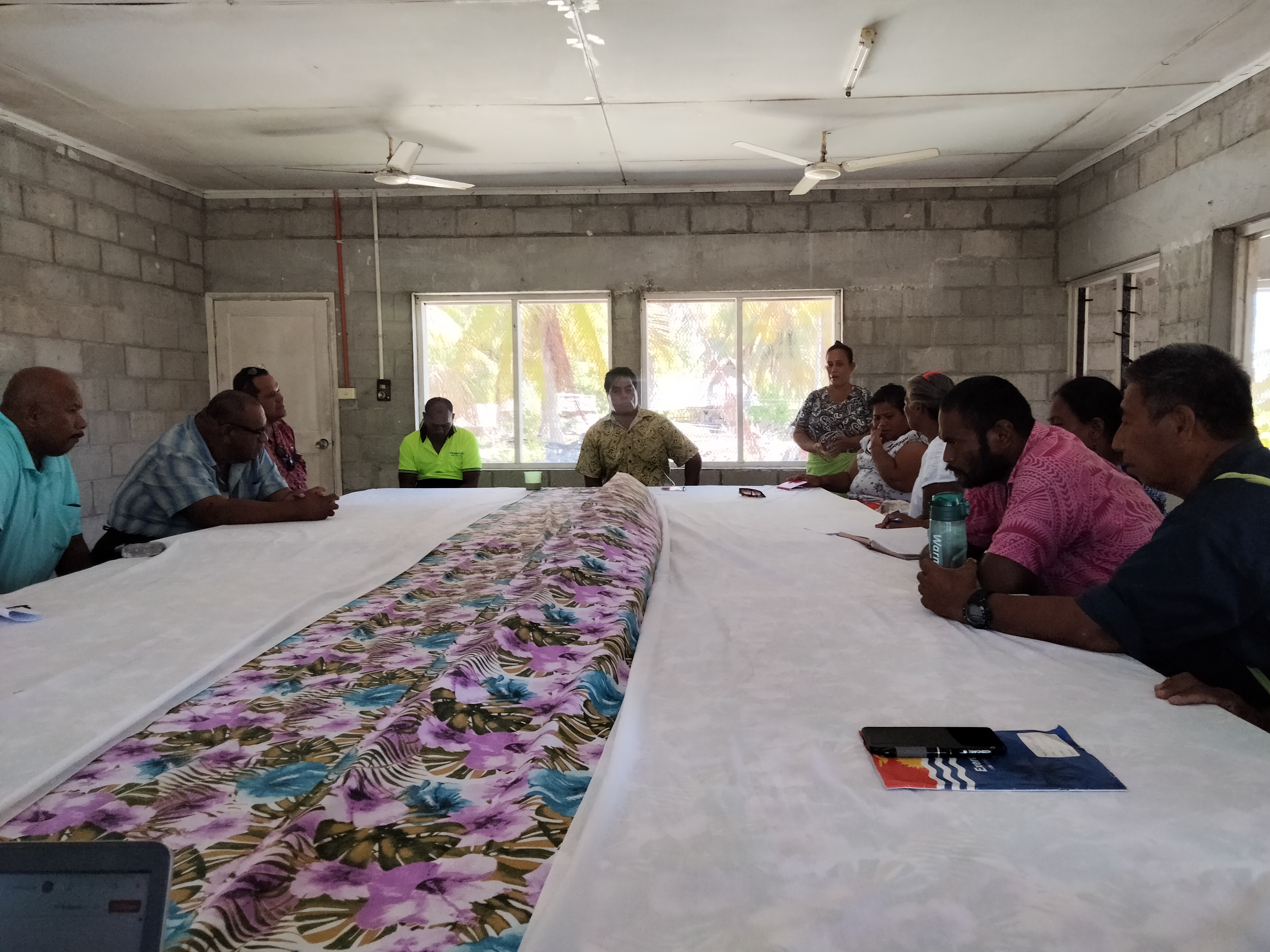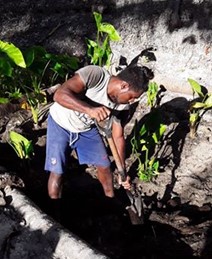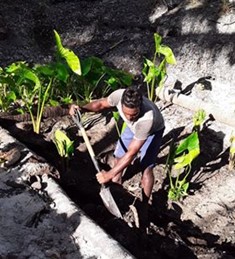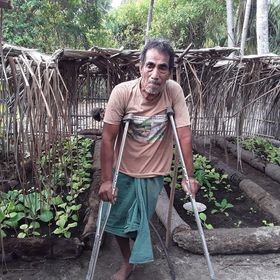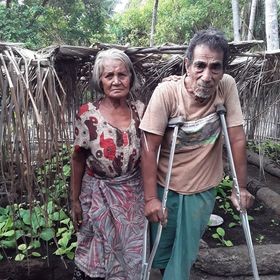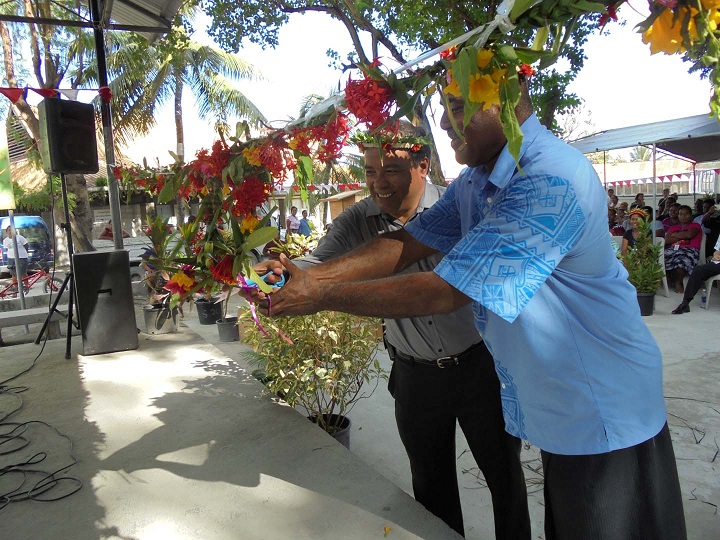By: TokintekaiBakineti – Manager Component 2
Rosalind Kiata – Communication and Knowledge Management Officer
MAURI MAURI MAURI
In Kiribati, people do not think consciously about their health in relation to the food they eat.
“What I eat does not matter, as long as I stop going hungry.” An old man argue that hunger should not overtake you but you should be able to know your way around it.
“Give your stomach a piece of coconut and a cup of water and there you go!”
This classical and stronghold on cultural believes shaped the way I- Kiribati people manage their life and also influences the choice they make on the type of food they eat.
From a cultural point of view, people in Kiribati perceive food as something only serving to satisfy their hunger which contradict the nutrition stance on food. This clearly explains the underlying reason why people in Kiribati do not worry much about the food they eat.
Starting from childhood, when a girl reaches her maturity stage, had her first menstrual period, she is treated culturally in such a way that this girl will grow up and be able to survive on minimal amount of food. This is one very important cultural expectation of a woman as her role is to feed her husband and kids first and prey on the left overs.
A man on the other hand, provides the family with his bounty which is a show-off of a manhood and skill. In the absence of a proper food storage, people are very fond of eating preserved food such as sun dried fish which sustains the family for a week or so, preserved toddy; a very delicious and sweet drink sweetener, preserved breadfruit and so forth.These foods may have possibly lost their nutritive value after being exposed to direct sunlight and a prolonged storage period.
Consequently, these food products may have possibly be hosting some micro-pathogens and other form of micro-life often detrimental to peoples’ health. Such eating habit needs to be reversed to change peoples’ mindset and practice to resort to eat more nutritious food to lead a healthy eating lifestyle.
In 2014, the IFAD funded Outer Island Food and Water project is implemented in Kiribati with the ultimate aim which aiming to improve the local diet through the consumption of a healthy food and clean drinking water.This project is implemented on the four outer islands namely Abemama, Nonouti, TabNorth and Beru.
In the start-up of the project, a baseline survey was carried out in 2015 to determine the nutritional status of children under the age of 5. In the survey report the result shows that boys were more underweight (13%) than girls (10%). The overall rate reported was 11% of all children under 5 years were underweight and this is much lower than 24% as reported in the 2009 DHS.
However, the baseline survey result of 11% is still a public health concern. In terms of food security, the survey shows that people eat grains quite more often than greens, vegetables and fruits which are rarely eaten only occasionally.
Overall, the report shows that the diet for the 4 project targeted islands of Abemama, Nonouti, Tabiteuea North and Beru is inadequate.
Based on the aforementioned issues reported on the poor health status of the people on the four islands, the project moves forward implementing a strong nutrition promotion campaign through media awareness, community nutrition education program, cooking demonstrations and a strong message on home gardening to provide availability and accessibility to crops and plants promoted.
The Nutrition Unit of the Ministry of Health and Medical Services, Agriculture Division of the Ministry of Environment, Lands and Agriculture Development and the Australian Centre for International Agricultural Research funded Soil Health project plays key roles in this implementation undertaking. The nutrition unit provides expertise on the nutritional education program which complemented with a cooking demonstration, the Agriculture Division plays an advisory role in home gardening while the ACIAR – funded soil health project conducted a research support in analysing nutritive content of locally available leafy vegetables and developing information on edible leaves, production methods and extension service through a Farmer Field School. While there is a diversity of programs emanated from the role these key individual partners play in this program, the Outer Island Food and Water Project (O IFWP) take a one-team approach where all these different key players’ programs are implemented in parallel to each other to allow all project staff to involve.
In Quarter 4 of 2016, all OIFWP staff including representatives from the Agriculture Division visited all communities at TabNorth Island for the implementation of the nutrition and home gardening program.
During this visit, the whole team split up into different groups and each group visit registered household particularly and assist in demonstrating compost making, preparation of vegetable beds, planting holes for fruit trees (short and long term) and providing advice mainly on the services IFAD - OIFWP is providing.
The nutritionist was unavailable during the launching of this nutrition program but was supposed to be represented by the Medical Assistant on the island.
However, there was a clash with other medical programs happening concurrently that prevent the participation of the Medical Assistant in this program.
This issue was resolved with Medical Officers at the Medical Head Office in Tarawa and ensures that nutritionist join the trips to the rest of the islands.
The ACIAR team were also on the island at the same time where they run Farmer Field School, introducing tissue cultured planting materials and set up trials at the selected sites within the communities.
The nutrition program implemented on the rest of the islands is all similar where a one-team approach was taken. The nutrition program was conducted in maneabas in parallel with home gardening which are happening at the same time.
In this program there was a discussion on the nutritional value of edible local vegetables followed by a cooking demonstration, weighing of infants and checking the blood pressure of people with hypertension records.
Diabetic screening was not conducted due to the shortage of proper equipment and materials which was a major and continuous problem faced by Medical Assistants on the 4 islands.
The table below present project target versus the achievement made so far on the number of people attending nutrition awareness program.
| Date |
Island |
Project target |
Achieved 2016 |
Achieved 2017 |
Accumulative |
| 5 - 9th December, 2016 |
TabNorth |
889 |
432 (102 women, 180 men
15 youths)
|
|
432 (102 women, 180 men
15 youths) |
| 6 - 15th February, 2017 |
Beru |
889 |
|
157 (77 men, 89
women)
|
157 (77 men, 89
women) |
| 22nd Feb - 8th March 2017 |
Abemama |
889 |
|
194 (72, 122 women) |
194 (72, 122 women) |
| 20th - 30th March 2017 |
Nonouti |
889 |
|
193 (111 women,71 men, 11 youth) |
|
| 23rd - 29th April 2017 |
Abemama |
889 |
|
245 (197 women, 48 men) |
439 (120 men, 299 women) |
| 24th April - 1st May 2017 |
Beru |
889 |
|
142 |
142 women |
The last column in the table above for Beru showed a decline in the number of people showing up for nutrition programs compared to the second column for the same island.Health data for the remaining 3 islands are not available
A second nutritionist visited the island 2 months later with findings listed in the table below.
| Under Weight |
Healthy Weight |
Over Weight |
Obese |
| 12 |
42 |
30 |
58 |
Nutrition activities done on the islands:
o Awareness on child health, NCD, the importance and the nutrition values of fruits and green leaves and vegetables especially local ones and portion size.
o Weight checking for community members that are coming, I did a counseling with those are underweight, overweight and obese.
The next round of this nutrition campaign program has started and have started off on Abemama Island where the team consist of an ALD representative together with nutritionist and Component 2 manager implementing the program targeting women.
The existing women structures on the island are the focus with a strong emphasis on the application of the concept of the consumption of locally available edible leafy crops which are more nutritious, easy to grow and quite abundant on the island.
Conversely, the value of these traditional crops are shadowed by the popularity of imported vegetables which are believed to be of low nutritional value. The associated traditional beliefs and ideologies on eating greens and leaves may be a factor that influences the choice people made on this traditional crops. In the local traditional context of eating leaves, leaves are normally a diet of pigs which can explain why people choose to take the pain to grow imported vegetables which are difficult to grow under the local environmental condition.
The ACIAR has identified a list of nutritious local leafy crops which are now promoted by OIFWP to be part of the diet. The list of some of these local leafy vegetables is listed in a table below;
| Crop |
Scientific Name |
|
Kiribati Name |
| Drumstick |
Moringaoleifera |
High in vit.A, protein, sulphur, selenium |
Te kai turam |
| Mota |
Amaranthusspp |
High in protein, vit A, magnesium, calcium, zinc |
Te mota |
| Hedge panax |
Polysciusspp |
High in zinc |
Te toaraa are e mangkoko baana |
| Beach cowpea |
Vigna marina |
High protein, iron and zinc |
Biin (te ruku) |
| Kangkong |
Ipomeaaquatica |
High in iron, manganese, copper |
Kangkong |
| Ofenga |
Pseuderanthemumwhartonianum |
High in magnesium, calcium, lutein |
Iamaii |
| Kanawa |
Cordia subcordata |
To be analysed but edible |
Kanawa |
| Buka |
Pisoniagrandis |
To be analysed but edible |
Buka |
The above list will be compiled in collaboration with ACIAR for a reference to be used in the promotion campaign program.
Media campaign complements efforts on the ground. This media campaign was carried out by the Communication and Knowledge Management Officer who through radio and media programs informing the public of the OIFWP nutrition program as well as promotions of the consumption of healthy diets. The following are activities undertaken during this reporting period;
Recorded nutrition awareness campaign prepared by the project and played over the radio on a monthly basis in a drama form. The same nutrition information was repeated for a week with questionnaires answered at the end of the 5-7 minutes duration of the play each day.
Listeners who tuned in for the programs rang in to the radio station to answer questions ranging from project identification, nutritional questions on the functions of vitamins, home gardening questions on plants and many others.
The duration of the program played each day was 45 minutes.
The second kind of nutrition awareness program was the sponsoring of ‘News Bulletin’ by the project. The radio program involved home gardening related activities catering for a balanced diet, water-related activities and community news.
The radio awareness program was played 6 times a day running continuously for 6 days a week.
Press releases were also sent to the media in the form of radio news and newspapers:
Listed below are some of the radio program, drama and related news promoting nutrition and project activities:
Nutrition information were relayed in the pre-recorded radio programs. Information were based on expectant mothers, which foods are best for them, nursing mothers, 6-month old baby when they start their first meal.
As mentioned earlier in this report, nutrition awareness campaign started off from home gardening. A balanced-diet needs all sorts of different plants for their leaves, tubers, corms and fruits, and other plants such as breadfruit tree, Fictustectonius, morinda, coconut trees and whatever was available nutritionally.
Compost making was also shared with leaflets distributed to communities and broadcasted.
The information was shared in the nutrition campaign and also shared to people with Non-Communicable Diseases including heart-related cases.
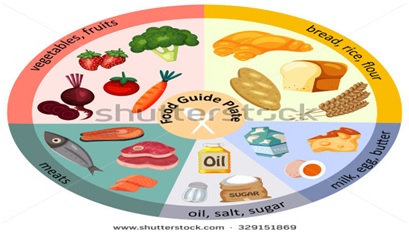
An example (above) of a nutrition poster depicting different kind of foods as a training guide.
Training materials such as posters on locally available foods on nutrition education were shared and distributed to participants composed mainly of mothers who attended cooking demonstration sessions.
The first cooking demonstration was for 6months to 5-year olds while the second demonstration was cooking for the Non-Communicable Diseases.
Local edible leafy plants with a high proportion of vitamins and minerals such as hedge panax (Polysciusspp), Cordia subcordia,chaya(Cnidoscolusaconitifolius), drumstick (Moringaoleifera), beach cowpea (Vigna marina), and Pseuderanthemumwhartonianum were used as ingredients for both cooking demonstrations.
Coconut cream was used as substitute for cooking oils and both recipes were sugar and salt free.
